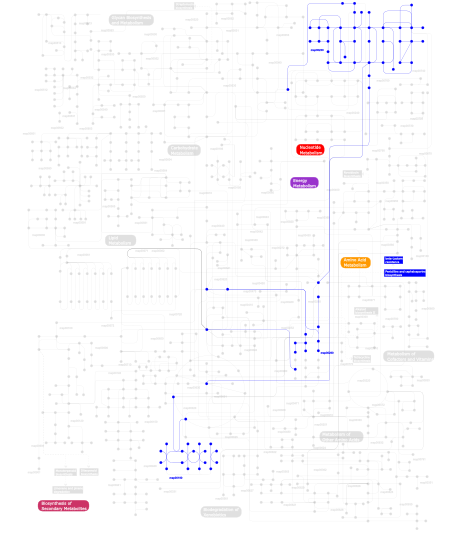The domain within your query sequence starts at position 151 and ends at position 175; the E-value for the ZnF_RBZ domain shown below is 1.69e-8.
QHWTCSVCTYENWAKAKKCVVCDHP
ZnF_RBZZinc finger domain |
|---|
| SMART accession number: | SM00547 |
|---|---|
| Description: | Zinc finger domain in Ran-binding proteins (RanBPs), and other proteins. In RanBPs, this domain binds RanGDP. |
| Interpro abstract (IPR001876): | Zinc finger (Znf) domains are relatively small protein motifs which contain multiple finger-like protrusions that make tandem contacts with their target molecule. Some of these domains bind zinc, but many do not; instead binding other metals such as iron, or no metal at all. For example, some family members form salt bridges to stabilise the finger-like folds. They were first identified as a DNA-binding motif in transcription factor TFIIIA from Xenopus laevis (African clawed frog), however they are now recognised to bind DNA, RNA, protein and/or lipid substrates [ (PUBMED:10529348) (PUBMED:15963892) (PUBMED:15718139) (PUBMED:17210253) (PUBMED:12665246) ]. Their binding properties depend on the amino acid sequence of the finger domains and of the linker between fingers, as well as on the higher-order structures and the number of fingers. Znf domains are often found in clusters, where fingers can have different binding specificities. There are many superfamilies of Znf motifs, varying in both sequence and structure. They display considerable versatility in binding modes, even between members of the same class (e.g. some bind DNA, others protein), suggesting that Znf motifs are stable scaffolds that have evolved specialised functions. For example, Znf-containing proteins function in gene transcription, translation, mRNA trafficking, cytoskeleton organisation, epithelial development, cell adhesion, protein folding, chromatin remodelling and zinc sensing, to name but a few [ (PUBMED:11179890) ]. Zinc-binding motifs are stable structures, and they rarely undergo conformational changes upon binding their target. This entry represents the zinc finger domain found in RanBP2 proteins. Ran is an evolutionary conserved member of the Ras superfamily that regulates all receptor-mediated transport between the nucleus and the cytoplasm. Ran binding protein 2 (RanBP2) is a 358kDa nucleoporin located on the cytoplasmic side of the nuclear pore complex which plays a role in nuclear protein import [ (PUBMED:12019565) ]. RanBP2 contains multiple zinc fingers which mediate binding to RanGDP [ (PUBMED:10318915) ]. |
| Family alignment: |
There are 45151 ZnF_RBZ domains in 26926 proteins in SMART's nrdb database.
Click on the following links for more information.
- Evolution (species in which this domain is found)
- Literature (relevant references for this domain)
- Metabolism (metabolic pathways involving proteins which contain this domain)
- Structure (3D structures containing this domain)
- Links (links to other resources describing this domain)






































